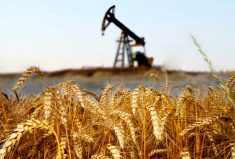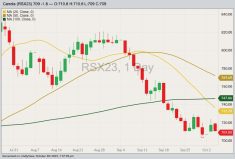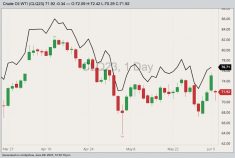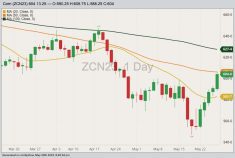CNS Canada — As oil prices plunge across North America, the impact on Canadian farmers is starting to be felt in several conflicting, but noticeable ways, according to Prairie farm leaders and market-watchers.
As of Friday afternoon the price of oil had fallen to just above C$66 a barrel, with some analysts predicting it would hit $60 in the coming weeks.
Cheaper fuel should mean reduced operating costs, said Doug Chorney, president of Keystone Agricultural Producers (KAP) in Manitoba.
“Many guys use lots of propane, natural gas and oil on the farm so that is something we mind,” he explained.
Read Also

U.S. livestock: Cattle mostly lower Monday
Cattle futures on the Chicago Mercantile Exchange were mostly lower Monday, seeing a modest correction to start the week after…
The president of the Agricultural Producers Association of Saskatchewan (APAS) agreed. “It should free up a little extra spending cash for us that would normally have gone to buying the products,” said Norm Hall.
However, Hall noted the price of diesel, on which the majority of farm machinery runs, had not fallen significantly lower.
“Gas has dropped 25 to 30 cents a litre, diesel just a few cents,” he said.
However, while farm inputs may have gone down, the sinking cost of a barrel of oil may have further consequences down the line.
“There is usually a spillover effect when the energy complex declines,” said Chorney.
A commodity expert from Winnipeg said pressure will likely grow on grains and oilseeds, too, because of the drop in oil.
Mike Jubinville of ProFarmer Canada explained corn and oil, along with gold, are the three “kings” in markets.
“I think the net effect will be a negative when it comes to the bottom line of dollars earned per acre of production of selected crops. There’s a balance in there but I think the net effect is negative, certainly at this point in time,” he said.
“Headwinds”
The slowing state of the world’s economy is only compounded by the drop in oil, he explained.
“It slows demand, which means we have excess supply in the system relative to demand, and compounding this problem is the speculative money being pulled away from the long side, and maybe even being repositioned to the short side of the futures for oil,” he said.
The end result, he said, is a cascading downward effect that spills into other commodities.
“While fundamentals are always key to determining any commodity’s future price trend, it’s hard to fight those headwinds when you have spilling selling pressure that’s being advanced by one of the larger commodities against the smaller commodities,” said Jubinville.
A lot of biodiesel is also created using soyoil and canola oil, Chorney noted, and declines in production would put pressure on oilseeds. As well, ethanol use is already sagging due to its relatively high cost compared to standard gasoline.
“So when gas is cheaper because crude oil is cheaper, that means ethanol is worth less, which means corn is worth less. Corn is the leading coarse grain in the market and it will have spillover effects on things like wheat, barley and oats,” Chorney said.
When it comes to fertilizer, Chorney isn’t sure if prices will drop significantly because of the oil plunge either. Natural gas is traditionally regarded as a key driver of prices in nitrogen, one of the main ingredients in fertilizer.
“We have seen fertilizer prices rise with the price of grain, so they’ll price fertilizer to what the market will bear,” he said, adding that forward purchasing of fertilizer supplies was usually brought on by a rising market.
Hall noted both Saskatchewan and Alberta depended largely on oil for their annual income.
“You look at the provincial budgets in Alberta and Saskatchewan; our governments depend on royalties, which are based on oil prices, for revenue,” he said, noting a few producers with oil wells on their properties also have mineral rights.
The Canadian dollar often follows the movements in crude oil closely, and the currency lost two-thirds of a cent relative to its U.S. counterpart on Friday to trade at US87.51 cents. Currency analysts are predicting more weakness ahead for the loonie.
“When the Canadian dollar declines against the American dollar it helps us as an exporting country. We’ll see more dollars return to us. I think that has the biggest impact on agriculture,” said Chorney.
— Dave Sims writes for Commodity News Service Canada, a Winnipeg company specializing in grain and commodity market reporting.















